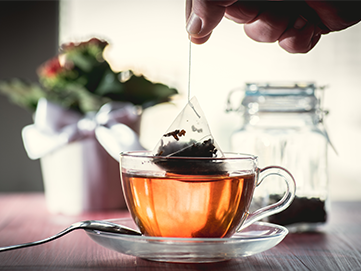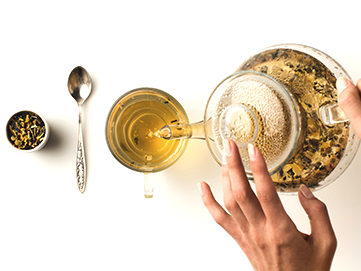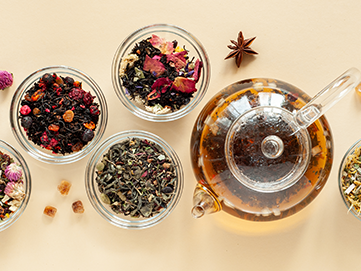What is Vata Dosha?
There are three doshas (humors) in Ayurveda, that balance the functioning of the human body. These doshas are governed by the five elements of nature – air, water, space, earth and fire. They are known as vata, pitta and kapaha doshas. Each person might be dominated by one of these doshas. Through a dosha quiz, you may understand what your body type is. The three doshas make up the physical and mental well-being of a person. For some reason, there can be an imbalance in doshas, and it can be excess or deficiency of Vata Dosha. This article has the signs, symptoms and solutions to Vata Dosha. Read on to expand your knowledge.Signs of Vata Dosha
The imbalance of vata can usually be seen in two variations: pathological increase and pathological decrease.-
Pathological decrease
When vata decreases, kapha increases; these two are antagonists in nature. This decrease may result in diseases or deficiency. Suppose vata is insufficient for your body to work correctly, you may show these symptoms. They are lack of enthusiasm and emotional push, tendency to consume foods that might increase vata, general body weakness and poor metabolism. -
Pathological increase
If there is an increase in vata in the body, you can spot it with the six symptoms below. They are- Sanchaya – Accumulating vata in its seats – Increasing hardness around intestines and stomach and feeling full in these two areas.
- Prakopa – Severe vitiation can be felt, which leads to a rise of pricking sensation in the abdomen and often, your stomach grumbles
- Prasara – Spread of vata – The accumulated vata travels throughout the body and settles anywhere. It can affect visceral organs, bones, joints, and several other vital organs. This spread can be noticed when you are suffering from unusual flatulence.
- Sthanasamshraya – Settlement of vata – The excess vata produced settles in various tissues, which results in either degeneration or disease. It includes tumours in the abdomen area and loss of appetite. Urinary stones, gout and several kinds of skin allergies can occur too.
- Vyatka – Manifestation of diseases – The diseases mentioned earlier might not be fully blown if you take care in the early stages. However, due to a lack of proper care, severe medical conditions can take hold of your body in full swing.
- Bheda – Stage of complications – The diseases may become fatal if not attended to properly.
- Sama – Improper digestion of food forms a toxin called ‘ama’. This substance is sticky and can be seen on the walls of the intestines, and it may block the usual flow blood to the heart. This consequence may give rise to constipation and drowsiness, sluggish metabolism, etc.
- Gata vata – Stubborn deposition of vata in tissues and organs causes dryness and cracks and makes the skin dark. You may also notice pain in the abdomen, chest and dryness of the throat and mouth.
- Avarna – Obstruction by vata – When the vata depositions obstruct the various tubes in your body, you may feel a burning sensation in your food pipe and persistent thirst.
- Ashayaparkarsha – Displacement of other doshas due to vata vitiation – This leads to burnouts and inflammation of tissues.
- Udavarta – Abnormal movement of vata – The upward movement of displaced vata suppresses natural reflexes or urges. It may also end with the excess urge to urinate and increase thirst and sleep.
Solutions to Vata Dosha
The vata imbalance can be treated both internally and externally.External treatments
- Abhyanga – massages with oils which have mitigating herbs
- Swedana – various exercises and movements which result in excess sweating
- Oil is poured in the areas where there is excess pain. The longer the oil stays there, the earlier you are relieved of pain.
Internal treatments
Lipids and medicines are given until the imbalance is cured. Organic herbal teas are also used to treat Vata Dosha. A variety of teas made from chamomile, ginger, fennel and ashwagandha serves the purpose. Herbea’s immunitea has the goodness of ashwagandha and tulsi. Say bye to your vata imbalance with us!FAQs
-
What are Vata Dosha's symptoms?
The symptoms found in Vata Dosha patients are dry skin, hair, ears, lips and joints. Also, someone with rough skin and lips has Vata Dosha. -
What food should people with Vata Dosha avoid?
People with Vata Dosha should avoid vegetables like cauliflower, broccoli, cabbage and eggplants. They should avoid eating raw apples, dried fruits, pomegranates and watermelon. -
What causes Vata Dosha?
Excess eating of dry and cold food items can lead to vata imbalance. Determine the nature of your body. If your body is cold, try to stay warm. Your mental health can also take a toll on vata. Hence, be kind and engage in things that make you happy! -
Is coffee good for Vata Dosha?
People with Vata Dosha should avoid coffee, as it may cause trouble sleeping.


